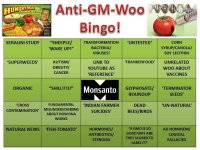Sorry. I meant living organic. Not bottle fed. And if our food system took care of its ridiculus waste problem and concentrated on nutrient rich whole food as opposed to additived filled toxic crap yield would not be such a concern.
The waste problem is a symptom of capitalism, not 'conventional' agriculture. The same problem would exist if all food was organic.
Conventional foods are just as nutritious as organic. They do not have any more 'toxic crap' than organic food.
https://www.health.harvard.edu/blog...s-than-conventionally-grown-food-201209055264



